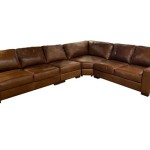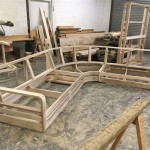How to Build a Wooden Sofa
Creating a wooden sofa is a rewarding woodworking project that allows you to customize a piece of furniture to your exact specifications and style. With careful planning and skillful execution, you can build a durable and eye-catching sofa that will be a cherished part of your home for years to come. This article will guide you through the essential steps involved in constructing a wooden sofa, providing detailed instructions and helpful tips along the way.
1. Planning and Design
Before starting any woodworking project, meticulous planning is crucial. This involves visualizing the desired sofa's dimensions, style, and features. Consider the following aspects:
a) Dimensions and Seating Capacity:
Determine the length, width, and height of the sofa. Consider the available space in your living room and the number of people you want to accommodate. Measure existing furniture or use online resources to find reference dimensions for standard sofas.
b) Style and Design:
Decide on the overall style of your sofa, such as contemporary, traditional, or rustic. Explore online design platforms and woodworking magazines for inspiration. Choose a design that complements your existing décor and personal aesthetic.
c) Materials and Finishes:
Select the type of wood you wish to use, taking into account its strength, durability, and aesthetic appeal. Consider options such as hardwoods like oak, maple, or cherry, or softwoods like pine or cedar. Research different wood finishes to achieve the desired look, from natural stains to paints, varnishes, or lacquers.
d) Construction Techniques:
Choose the construction techniques that best suit your skill level and the design of the sofa. Options include traditional mortise and tenon joints, dovetail joints, or simpler methods like pocket holes and screws.
e) Seat Cushioning and Upholstery:
Decide on the type of cushioning you want for the seat and back. You can use foam padding, springs, or a combination of both. Consider the level of comfort and firmness you desire. Choose suitable upholstery fabric based on your style and the sofa's use.
2. Cutting and Assembling the Frame
Once you have finalized the design and gathered the necessary materials, you can begin constructing the sofa frame. This involves cutting, shaping, and joining the wood components:
a) Cutting the Wood:
Use a saw, such as a circular saw or table saw, to cut the wood pieces to the exact dimensions specified in your plan. Make sure to use accurate measuring tools and a sharp blade for precise cuts. Cut all pieces to the same length and width as specified in the plan.
b) Shaping the Wood:
If your design involves curved or irregular shapes, you may need to use a router or band saw to shape the wood pieces. Ensure you take necessary safety precautions and use appropriate tools for the job.
c) Joining the Wood:
Join the wood pieces together using your chosen construction techniques. If you opt for mortise and tenon joints, use a chisel and mallet to create the mortises and tenons. For simpler methods, use a drill and screws to secure the pieces together.
d) Glue and Clamping:
Apply wood glue to the joints before assembling the frame. Use clamps to secure the pieces in place until the glue dries completely. Follow the manufacturer's instructions for the type of glue you are using.
3. Adding the Seat and Back Structure
After constructing the frame, you need to add the seat and back supports. This involves building the structures that will hold the cushions and provide the necessary support.
a) Seat Frame:
Create a sturdy seat frame using wood pieces that are the length and width of the sofa seat. Join the pieces together using your chosen construction methods. This frame will provide support for the seat cushions.
b) Backrest Frame:
Similar to the seat frame, build a backrest frame using wood pieces that are the length and width of the sofa back. Ensure the backrest frame is securely attached to the main frame.
c) Adding Braces:
For added stability and to prevent sagging, consider adding braces to the seat and backrest frames. These braces can be made from wood strips that are attached to the frame's underside, connecting the front and back of the seat or backrest.
4. Finishing the Sofa
Once the structure of the sofa is complete, you can move on to the final stages of finishing. This involves sanding, applying the finish, and adding the upholstery:
a) Sanding:
Sand the entire sofa using different grit sandpaper, starting with a coarse grit to remove any rough edges and imperfections and gradually progressing to finer grits for a smooth finish. This process ensures that the paint or stain will adhere evenly.
b) Applying the Finish:
Apply the desired finish to the wood. This can be a stain, paint, varnish, or lacquer. Follow the manufacturer's instructions carefully, including the number of coats to apply and the drying time between coats. Evenly apply the finish using a brush, roller, or sprayer.
c) Adding Upholstery:
Once the finish is dry, you can add the upholstery. If you are using fabric, cut and staple the fabric to the seat and back cushions. If you are using leather, you may need to use a professional upholsterer for a proper finish.
By following these steps and taking your time, you can build a high-quality wooden sofa that will be a treasured piece of furniture for years to come.

Diy Wooden Sofa
.jpg?strip=all)
Diy Wood Sofa The Merrythought

Build Your Own Couch With Wooden Material Diy Sofa

Diy Sofa With Modern Styling Fixthisbuildthat

35 Budget Friendly Diy Sofas And Couches Sofa Wood Furniture Plans Homemade

How To Build A Diy 2x4 Sofa For 160

Diy Sofa Made Out Of 2x10s

How To Make Studio Couch Wood Structure

How To Make A Sofa Frame Step By Guide An Seating Chart Tips Tricks In 2024 Corner Design

50 Easy Ways To Build A Diy Couch Without Breaking The Bank








